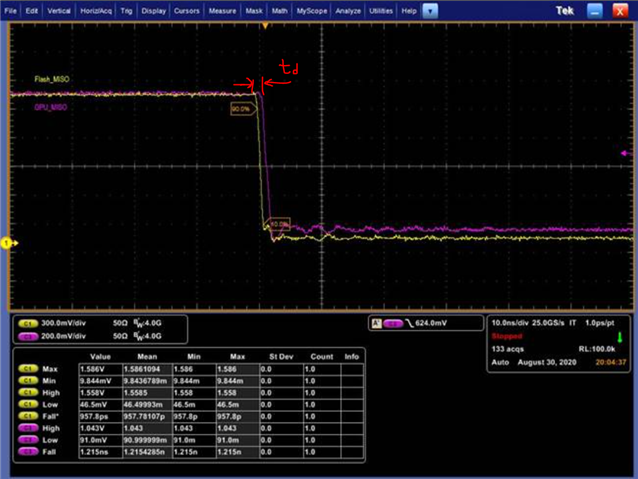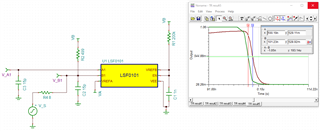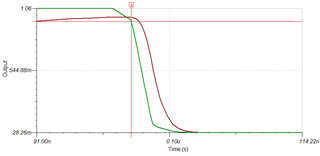Other Parts Discussed in Thread: TINA-TI
Hi Team,
While I look into how LSF device works, I ran into an e2e thread (please find the original thread) and I have a question.
In the original thread, there is a waveform as below - B side (yellow) input to A side (purple) output.

To my understanding so far, the output should drop immediately following the input signal, because LSF acts just like a resistor with almost zero delay. But in the waveform, there shows a delay, t_d. Could you help me to understand under what circumstance the delay can occur?
As Emrys Maier mentioned, the B side is connected to something that can discharge faster than A side in the customer board. Is the t_d also occurring depending on the driver/receiver driving capability or something?
Thanks,





